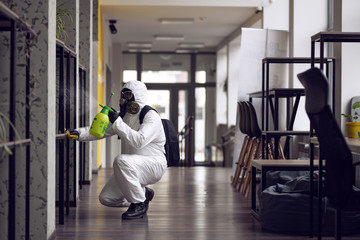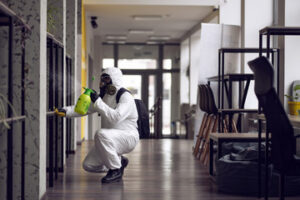Best Car Accident Lawyer In Maryland can help you through the process of filing a claim and negotiating with an insurance company. They can also file a lawsuit against the negligent party.
They will explain your state’s statute of limitations for filing an injury lawsuit and how that relates to your case. They will also ask about any major or long-term injuries you suffered because of the accident.

If another driver hits you, their insurance company sends an adjuster to investigate the damage and establish your injuries’ seriousness. They will visit the scene, take photos, review police reports, interview you, your medical providers, and other witnesses, take X-rays or examine you in person to assess the severity of your injuries, and document all your expenses and losses.
Car accident lawyers negotiate with insurance adjusters and prevent them from undervaluing your claims or compromising your case. They know how to present evidence in a way that is persuasive and compelling. They can also interpret confusing insurance laws and policies to make sure that your rights are protected.
A good lawyer will work on a contingency fee basis, meaning that they only get paid if they win your case. This aligns their interest with yours and gives them the motivation to work hard on your behalf. They also have a network of professionals, including accident reconstruction experts and medical professionals, they can call on to support your claim.
The goal of any car accident case is to recover money for your losses, known as damages. These can include your past and future medical expenses, lost wages, property damage, emotional distress, pain and suffering, and more. However, proving the extent of your damages can be difficult. Without legal guidance, it’s easy to overlook items that may be covered by your claim.
Proving fault in a car accident can be a long and frustrating process. An experienced car accident attorney understands the legal complexities and intricacies of these matters, which can help speed up the process and prevent errors that could jeopardize your case.
An unlicensed or inexperienced attorney could miss critical deadlines, fail to understand insurance policies or coverage limits, or overlook relevant case law that might help in a courtroom trial. Trying to handle these matters on your own could leave you with less than you deserve. An experienced car accident lawyer can navigate the complex processes, deal with aggressive insurers, and ensure that you receive full and fair compensation for your damages.
Just like in many other states, there are a lot of drivers on the road who do not have automobile insurance. Unfortunately, this can cause a lot of problems when car accidents occur because the injured person is left without any financial compensation. Fortunately, most car accident insurance policies include Personal Injury Protection (PIP) or Uninsured/Underinsured Motorist coverage to help compensate the victims of such crashes.
In order to get the most out of this type of coverage, a car accident lawyer can help you with your UM/UIM claim. They can help you understand your own insurance policy, review the limits of this coverage, and file a proper claim within the required time period. They can also work with medical experts and accident reconstruction specialists to strengthen your case.
Proving your damages is essential to getting a fair UM/UIM payout. This includes showing that the injuries you suffered were caused by the crash and calculating how much you are entitled to for your economic losses, such as hospital bills, lost wages, and property damage. It also involves proving non-economic losses, such as pain and suffering. A tenacious car accident lawyer can help you calculate and document these losses so that the insurance company is willing to pay what you deserve.
The insurance companies in these types of cases can be difficult to deal with because they are out to minimize the amount you receive. They will frequently question and diminish the severity of your injuries in an attempt to reduce the amount they must pay you. You do not have to let them do this. A qualified Long Island UM/UIM lawyer can help you fight back and get the money you deserve.
In addition, it is important to seek medical attention immediately after a crash. Whether this is at one of the excellent hospitals, such as Presbyterian, or even an urgent care clinic, it is vital to your health and safety that you see a doctor right away. If you do not, it could take longer for your medical injuries to fully manifest and may make it more difficult to prove the full extent of your losses.
The statute of limitations sets a limit on how long you can file a lawsuit after your car accident. Your attorney can ensure that you don’t miss the deadline, and help you prepare for trial if necessary. They’ll also investigate the accident to determine liability and calculate your damages.
Insurance companies work to minimize their financial responsibility, and they may use tactics like bogging you down with questions or demanding too much evidence before offering you compensation. Car accident lawyers are accustomed to working with these companies and know their tactics, so they can stand up for your rights and get you the money you need.
After a thorough assessment of your case, your lawyer will make a demand letter to the at-fault party’s insurer. This will lay out your damages and include a request for compensation to cover your medical bills, property damage, lost wages, and future losses. Your lawyer will then negotiate with the insurance company, and they’ll fight to ensure that you receive a fair settlement that covers all of your present and future damages.
Even a minor car accident can cause serious injuries, and you deserve full compensation for your medical expenses and other damages. In addition to monetary compensation, you may be entitled to non-economic damages such as pain and suffering. These are harder to quantify, but your car accident lawyer can help you obtain the damages that you’re entitled to under New York law.
In some cases, it’s impossible to establish fault in a crash, and the at-fault party will deny or minimize their responsibility. A car accident lawyer can investigate the incident, interview witnesses, review medical records, examine photos and physical evidence, and consult with experts to build a strong case on your behalf. In some instances, they can use their experience to convince the at-fault party’s insurance company to accept a reasonable offer without going to trial. In other cases, a trial is needed to obtain the maximum award possible. In the event that your claim does go to trial, a car accident lawyer can assist you in finding the best trial attorney to represent you.
A car accident can be a life-altering event, especially when it results in injuries. If you’ve suffered injuries or property damage in a crash caused by another driver, your car accident lawyer will help you get the compensation you deserve. During the case process, the more documentation you have, the stronger your claim will be.
In addition to collecting medical records, photos, and witness statements, your attorney will also review the police report of the accident. They will use this to determine if there was any negligence by the at-fault driver. They will also assess the severity of your injuries and determine the amount of future damages you are owed for medical bills, lost wages, and other expenses.
It’s critical to see a doctor immediately after an accident, even if you don’t think your injuries are severe. Not only will this ensure that you receive the proper treatment, but it will also establish a link between your injuries and the accident. Plus, your doctor’s visit will generate a medical report that will be useful later on in your car accident case.
An experienced car accident lawyer will know how to negotiate with insurance companies to secure a fair settlement. They will also be prepared to go to trial if a satisfactory settlement cannot be reached. They will evaluate all potential legal strategies and make the best decision in your best interest.
There are many factors that can cause a crash, including speeding, failing to yield the right-of-way, and driving under the influence. Fatigue can also be a contributing factor, since it causes drivers to swerve between lanes and brake or accelerate without looking at the road. In fact, about 8 to 9 percent of accidents involve fatigued driving.

